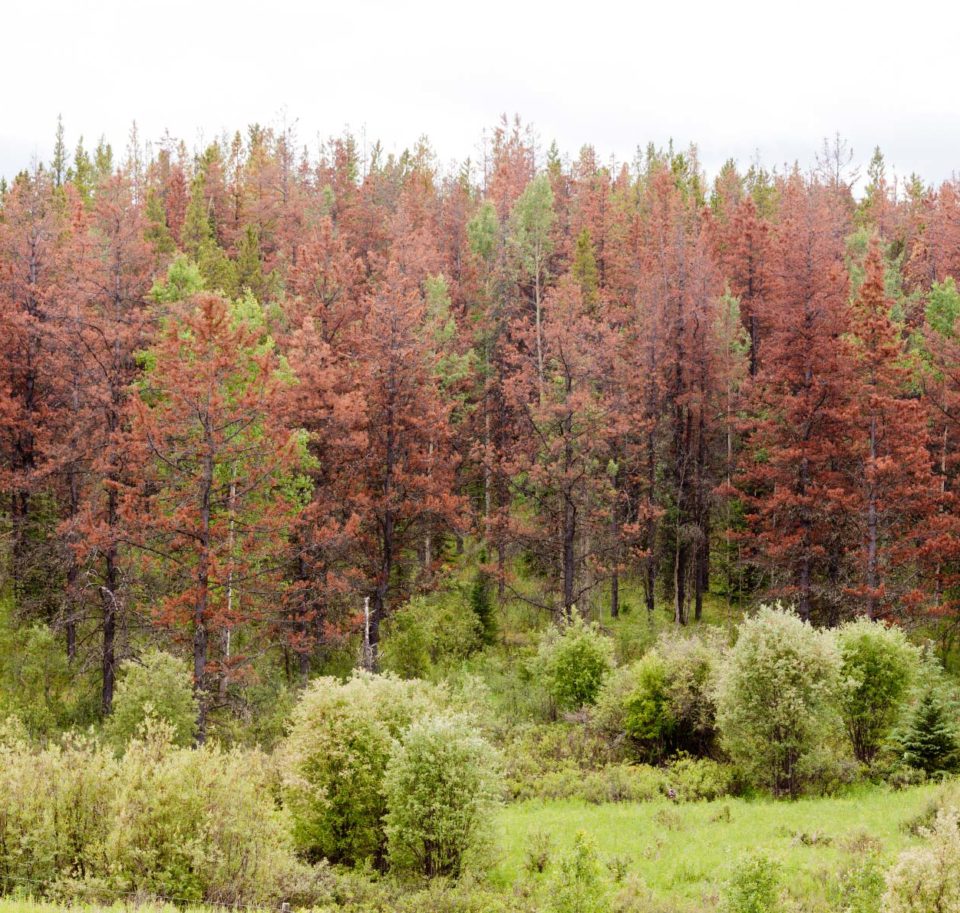
Some evidence of beetle presence is normal across North America, but when a large infestation is left unchecked, it can destroy huge swaths of forest very quickly.
The mountain pine beetle is a tiny parasitic insect, about the size of a grain of rice, that kills trees by burrowing into the trunk and spreading a fungus that cuts off the tree’s flow of water and nutrients. In recent years, Alberta’s forests have been threatened by a large infestation of mountain pine beetles moving east from British Columbia – in BC, this infestation has so far killed 40 million acres of forest.
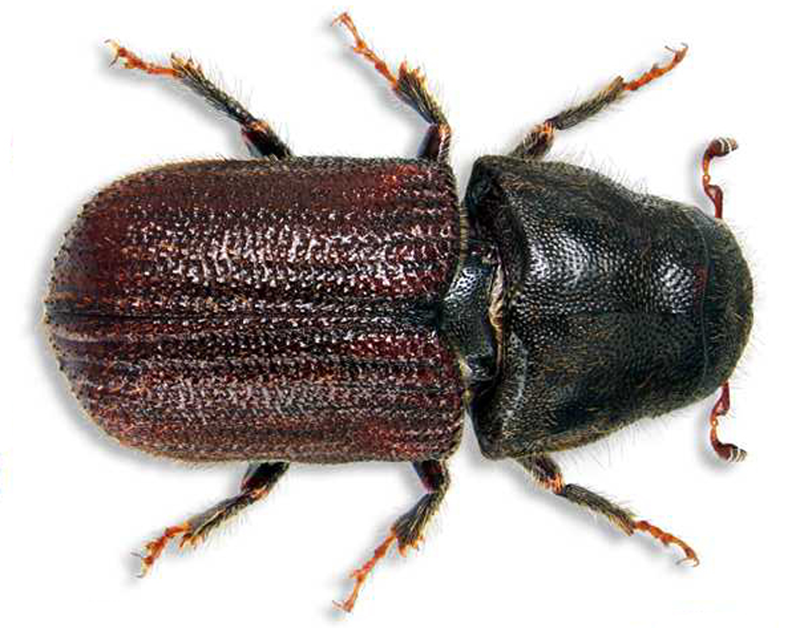
MOUNTAIN PINE BEETLE LIFECYCLES
Adult beetles emerge from the infested trees where they hatched in the summer, and females take the lead in colonizing new trees to reproduce in. They release a pheromone that attracts more beetles to the trees they’ve attacked, and burrow into the inner bark to build the pockets where they lay their eggs.
As they’re building their egg chambers, the beetles spread a blue fungus that takes hold of the tree’s sapwood and inner bark. The fungus colonizes the tree, which blocks the tree’s ability to defend itself and circulate nutrients. In many cases the tree will die of starvation. The mountain pine beetle larvae then hatch from the eggs over the winter.
Periods of very cold weather can kill the larvae and decrease the number of new beetles that emerge in the next season, but timing matters – as temperatures drop the larvae naturally develop antifreeze in their bodies, like the chemical we use in our cars, so if the cold weather comes too late in the winter, they’re likely to have produced enough of the protective substance to survive. The larvae mature into adult pine beetles by June or July and feed on spores from the fungus before setting off to attack more trees and start the cycle again.

BEETLES IN ALBERTA
In the 2000s there was a severe outbreak of mountain pine beetles, and they began attacking forests in areas where they hadn’t been a major presence before. Populations of the beetle’s natural predators, like woodpeckers and other insect-eating birds, haven’t kept up with the growth in beetle population. Climate patterns have also worked out in the beetles’ favour. Periods of extreme cold have been happening less frequently and later in the year, and hot, dry summers have placed strain on trees. Under this kind of stress, the trees are less able to defend themselves.
One of the major concerns in Alberta is that the beetles have started attacking jack pine, on top of attacking species like the lodgepole pine that have been their main targets in the past. Jack pine hasn’t developed the kind of natural defences some of these other species have, because the forests where they live in Alberta haven’t seen such large-scale beetle attacks before.
Without human intervention to limit the beetles’ spread, these forests can succumb very quickly. And when one large area of forest has been killed, the offspring of those beetles emerge the next summer and spread to the surrounding areas.
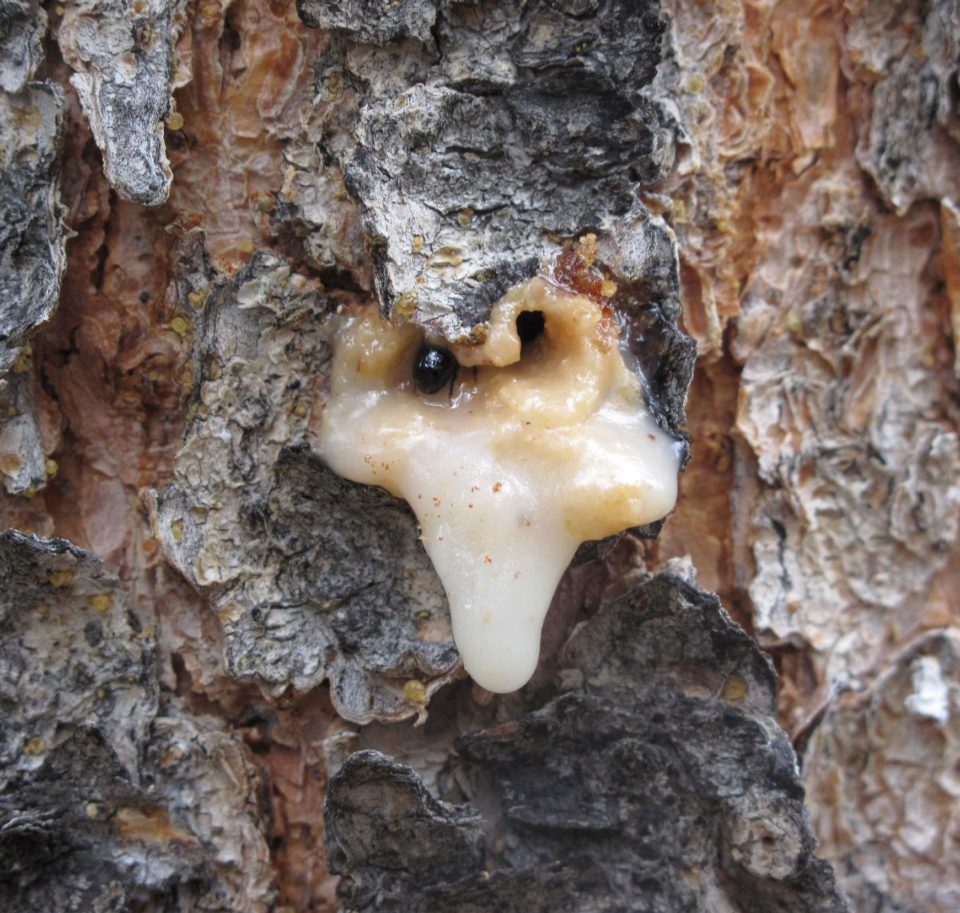
SIGNS OF AN INFESTATION
Entrance Holes
In the early stages of infestation, you might see small holes on the outer bark of a tree with sawdust around them. These holes are where the beetles have burrowed into the tree.
Pitch Tubes
As the tree tries to defend itself, you may see “pitch tubes” – larger openings with thick sap or resin pouring out. Pitch tubes can also be a sign that the tree is fighting a different kind of parasite or disease. A mountain pine beetle attack is just one reason a tree might look like that.
Red Needles
Within a year, it’s very easy to recognize a tree that’s been killed by mountain pine beetles. The needles of the tree turn yellow and then red. In some parts of Alberta, there are very prominent sections of forest that have been lost to mountain pine beetle infestations.
Traps
As part of programs to treat and prevent infestations, the Government of Alberta uses traps that look like small black boxes. If you see these in a park or forest, that section of trees is probably being treated against mountain pine beetle attacks.
Blue Stained Wood
Beetle-killed timber is dyed blue, a stain left by the fungus that the mountain pine beetle introduces into the tree.
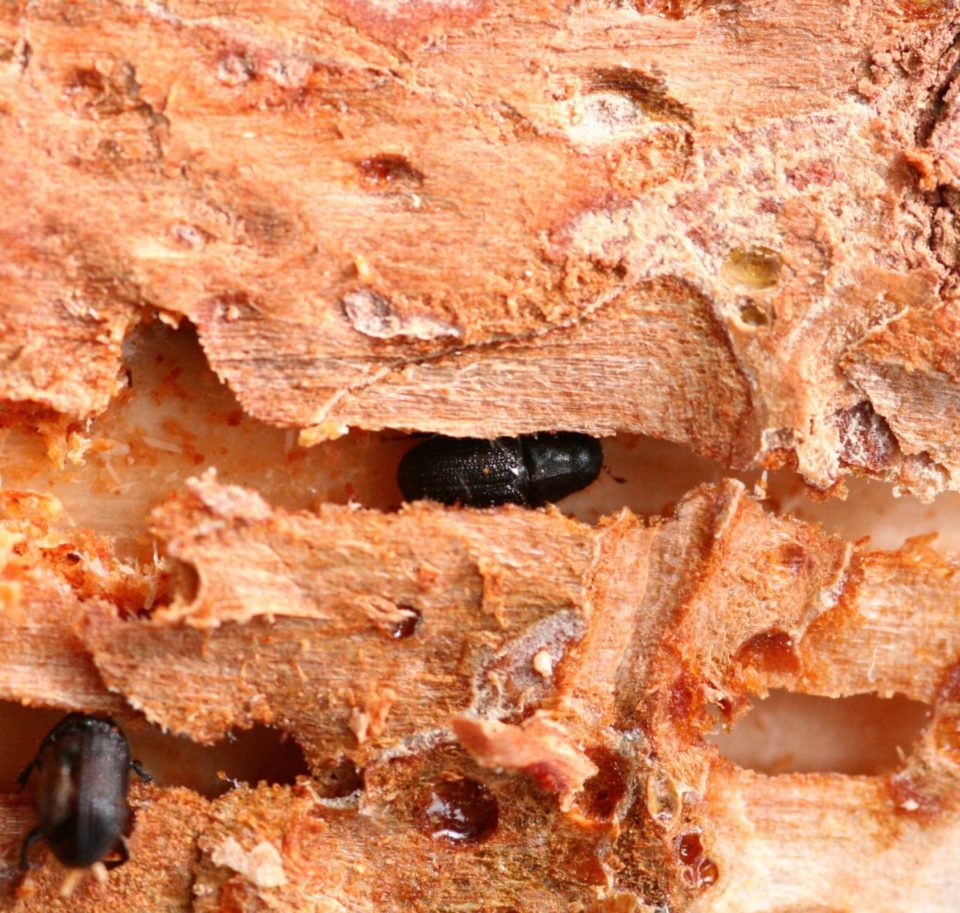
SLOWING THE SPREAD
The Government of Alberta and the forest industry have worked hard together to stop mountain pine beetles from moving unchecked across Alberta. Since there’s a fairly continuous stretch of boreal forest across Canada, this matters for other provinces too – if we don’t intervene, the beetles could continue spreading east across the country very rapidly.
Early Intervention
If beetle attacks in a new area are caught very early and the infestation is light, single-tree interventions can be used. This can include techniques like removing individual affected trees or applying pheromone patches in the area that repel the beetles.
Strategic Harvesting
In areas where the mountain pine beetle has heavily infiltrated the forest and the risk of further spread is high, we can save more trees in the long run by harvesting the affected area. This helps prevent the beetles from advancing into neighbouring sections of forest, in cases where targeting single trees won’t be enough to solve the problem.
Results
We’ve had significant success here in containing and limiting the reach of mountain pine beetles. This is still an issue that we need to be vigilant about, and the government and the forest sector are still actively working on it, but the outcomes we’ve had so far are encouraging.
One way we can see the impact of our activities is by looking at areas where intervention has been lighter. In national parks, for example, the forest industry doesn’t operate. We’ve seen very significant loss of trees to the mountain pine beetle in Jasper National Park, while areas where we’ve been able to step in and respond to infestations have been less affected over time.
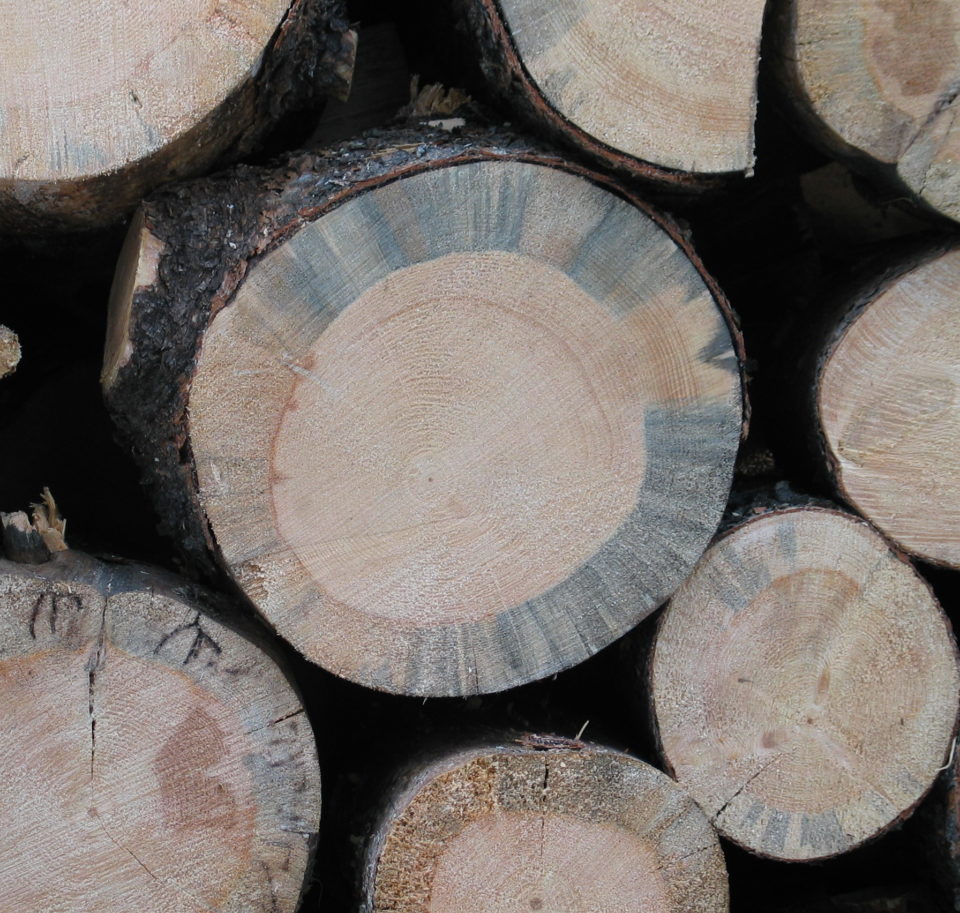
USING BEETLE-KILLED WOOD
Trees that have been killed by the mountain pine beetle can still be used to create forest products, but there’s a very short window for that to happen. Once a tree has died this way, moisture quickly starts escaping from it and creating cracks in the wood that make it much harder to use. The biggest cracks tend to happen first, within just a few months.
Wood products made from beetle-killed trees typically have a distinctive blue stain in them. This comes from the fungus that the beetles spread into the tree. The fungus doesn’t affect the strength of the wood and doesn’t pose any health risk to people, but it does give the wood a unique appearance. Some woodworkers enjoy working with beetle-killed timber because the blue tint adds an interesting aesthetic quality to their projects.
